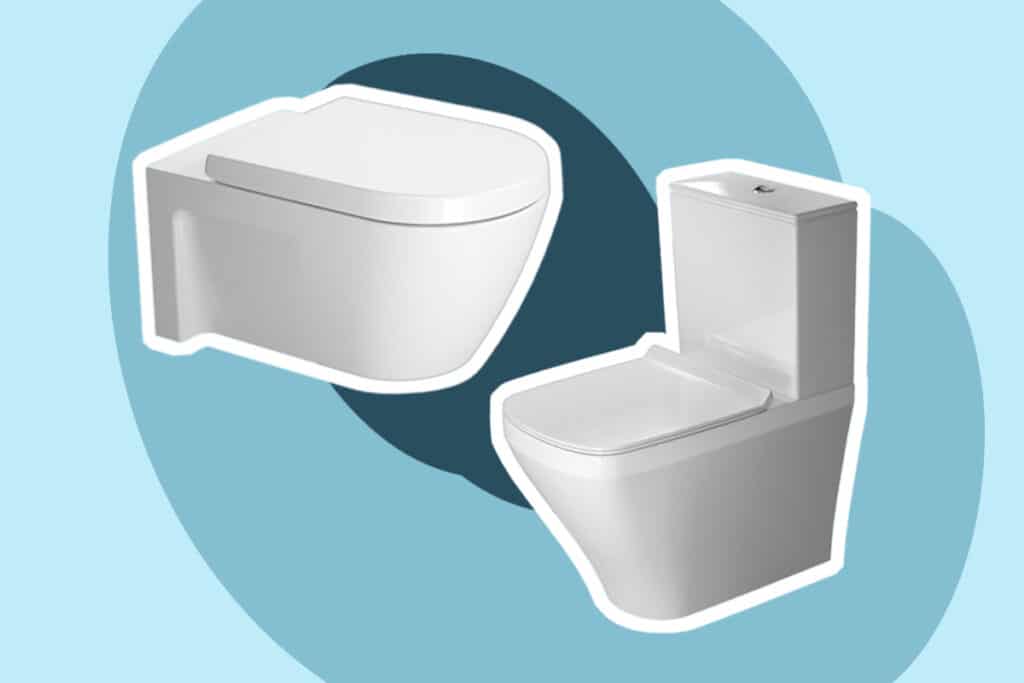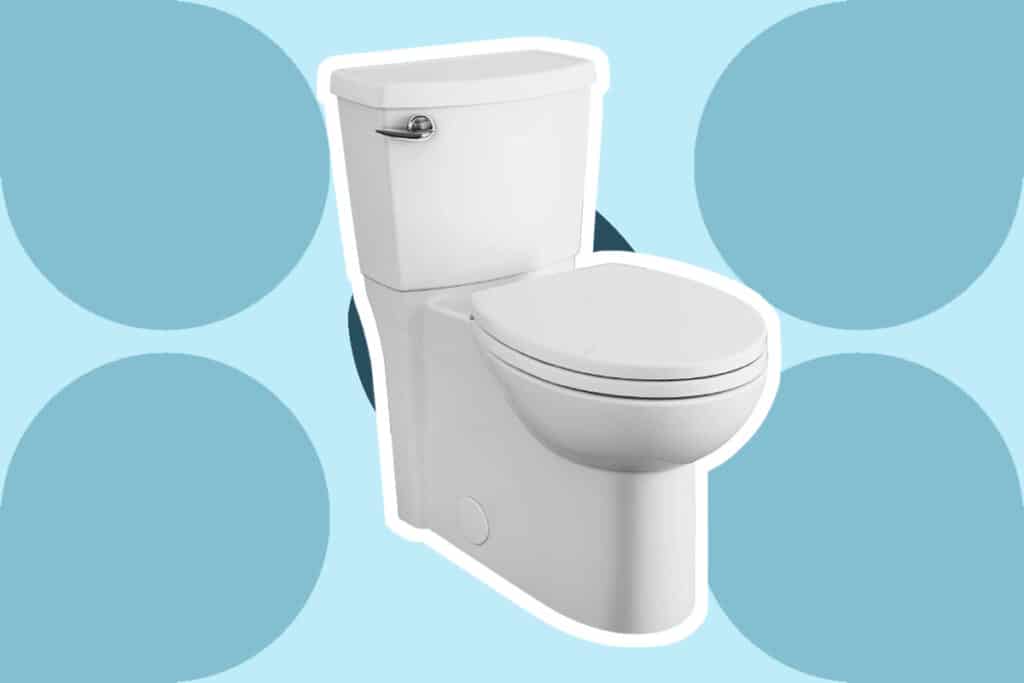

In a world obsessed with statistics, you can be sure that someone has taken the time to calculate how often the average person uses the toilet. Would it surprise you to know that a poll done in 2018 estimates that the average, healthy person will spend about one hour and 42 minutes a week on the toilet?
With that in mind, it makes sense to give the least spoken about item in your home a little more attention. Ordinarily, the average person only has a discussion about the toilet seat when it’s broken or it’s time for an upgrade. But why not make the change today? Your time in that room could be more comfortable than you’re used to. When considering what toilet to buy, one of the most common questions asked is, “wood vs plastic seat – which is better?”
Today I’m going to look at a few factors you need to consider when deciding between the wood vs plastic toilet seat debate. Factors such as comfort, cleaning, price and durability are important to consider when it’s time to replace or upgrade. Read on to see what you need to know about choosing between wood or plastic toilet seats.
Traditionally, toilet seats were designed to prevent you from falling into the old outhouse toilets. In the modern world, toilet seats serve two purposes. The first is to provide you some level of comfort and the second is to protect you from what’s inside the bowl.
Using an uncomfortable or damaged toilet seat can lead to rashes, bruises or other injuries. A proper, quality toilet seat will provide you with some comfort while using the bathroom.
When using toilet seats, we usually only have one requirement: cleanliness. There’s actually more to this product niche. For example, is there a difference between wood vs plastic toilet seats? Let’s look at an in-depth comparison between the two.
When it comes to which material is safer between the two, it’s important to consider that wooden seats are generally thicker than their plastic counterparts and are therefore less likely to break. Wooden seats are often made of oak, bamboo or wood veneer Trusted Source Wood veneer - Wikipedia In woodworking, veneer refers to thin slices of wood and sometimes bark, usually thinner than 3 mm (1/8 inch), that typically are glued onto core panels (typically, wood, particle board or medium-density fiberboard) to produce flat panels such as doors, tops and panels for cabinets, parquet floors and parts of furniture. en.wikipedia.org .
However, plastic tends to have a longer lifespan because wood can warp due to long exposure to moisture. In a bathroom where the toilet is in the same room as the shower or bath, there will more exposure to moisture.
Wooden toilet seat covers have a more traditional, antique appearance. They’re an ideal addition to bathrooms with wooden features in the existing décor such as towel racks, baseboards and wooden cupboards.
Plastic toilet seats tend to fit better in bathrooms with décor leaning toward a more modern, crisp aesthetic. White toilet seats easily complement existing silver or stainless-steel décor. Both the wooden and plastic toilet seats are available in round or elongated shapes.
One of the most popular ultra-modern plastic toilet seats is the TOTO SW2034#01 C100 Electronic Bidet Toilet. With its heated seat, warm air dryer and deodorizer this electronic plastic toilet seat provides a modern approach to toilet comfort. Adjustable warm water and a series of pressure settings create an energizing clean before and after every use.
The PREMIST feature easily stops waste from sticking to the side of the toilet bowl by using the incoming water supply to cleanse the bowl before every use. A super convenient panel on the side allows you to choose your preferred water cleansing settings. The Soft Close provides continuous warm coverage over the full surface of the seat, making it one of the best heated toilet seats around!
Installing either wooden or plastic seat options is a relatively easy DIY project. It’s as simple as unbolting the old seat, mounting the new one in place and using the components added in the box to secure the seat to the toilet. If the older bolts get stuck, a small amount of lubricating oil should take care of that problem.

One of the most common questions asked when it comes to choosing between wood vs plastic is which one is easier to clean.
Since wooden toilets are coated with laminate or sealant, they’re quite germ resistant. It’s important to note though that with continuous cleaning and age the sealant will eventually wear off. Eventually, your wooden toilet seat will require extra laminate applications.
Since plastic isn’t as porous as wood Trusted Source Porous medium - Wikipedia A porous medium or a porous material is a material containing pores (voids). The skeletal portion of the material is often called the “matrix” or “frame”. The pores are typically filled with a fluid (liquid or gas). The skeletal material is usually a solid, but structures like foams are often also usefully analyzed using concept of porous media. en.wikipedia.org , it’s much easier to clean by wiping the surface with a sanitary cloth and cleaning liquid. With plastic, there’s also no need to worry about any laminate wearing down over time.
The most important factor to consider when choosing a toilet seat is comfort. Plastic seats tend to feel cold and somewhat flimsy. Wood on the other hand feels solid and sturdy. Depending on the type of wood chosen, the seat might retain some warmth and not feel as cold in the winter. Because of their sturdier feel, wooden toilets are a popular choice for heavier people.
Toilet seats range in prices depending on brand, materials and style. Wooden toilets are generally more expensive while plastic toilets are at the lower end of the price range. This is also dependent on the type of wood used.
A quality wooden option to consider is the Design House 561241 Dalton Round Toilet Seat currently gaining popularity because of its quality honey oak wood finish. With its smooth lines and traditional aesthetic it easily complements any country-style bathroom. Since it measures 16.9” by 14.6” it’s easy to mount and install.
Ordinarily, wooden seats are less likely to break because they’re thicker and sturdier. It must be said though that it’s not usually the toilet seat that breaks but the components that connect the seat to the base. These components are usually made of plastic or metal.
In general, both plastic and wooden toilet seats last an average of 5 years. It depends largely on how your toilet set is maintained.
Molded wood is a modern composite using a molding technique to create wooden products in numerous shapes. One of these shapes is a sturdy toilet seat. Molded plywood is 100% recyclable, economical and fire-resistant. Plastic on the other hand isn’t recyclable and is lighter than molded wood.
If it’s comfort you’re looking for, the Mayfair 13CP 000 Soft Toilet Seat with Molded Wood Core is right up your alley. With its soft, cushioned vinyl seat it provides comfort and durability making it one of the best padded toilet seats around.
Enameled wood toilet seats feel strong and have a high gloss finish. Users often describe them as being warmer and heavier than their plastic counterparts. Design options include sculptured models with decorative cover patterns that complement your décor theme.
Plastic toilet seats are lighter in weight, more durable and long-lasting. Components include chrome and plastic hinges. A wide range of colors and designs are available.
The contest between wood vs plastic toilet seats ultimately boils down to personal preference based on your comfort. Both options have their own aesthetic appeal and their own set of advantages.
When it’s time to choose between wood vs plastic toilet seat, consider the factors we’ve discussed above and base your decision on what’s the most comfortable for you and your family.





